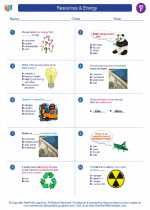Caribbean Sea
The Caribbean Sea is a sea of the Atlantic Ocean situated to the southeast of the Gulf of Mexico. It is bounded by the islands of the Caribbean to the south and east, and by the Central American coast to the west. The Caribbean Sea is a popular tourist destination known for its beautiful beaches, warm climate, and diverse marine life.
Geography
The Caribbean Sea covers an area of about 1,063,000 square miles (2,754,000 square kilometers) and has an average depth of about 8,685 feet (2,647 meters). It is home to numerous islands, including the Greater Antilles (Cuba, Jamaica, Hispaniola, and Puerto Rico) and the Lesser Antilles (Barbados, Trinidad and Tobago, and others).
Importance
The Caribbean Sea has been historically important for trade, transportation, and fishing. It has also been a significant area for colonial powers, leading to a diverse mix of cultures and languages in the region. The sea is also known for its coral reefs, which are important ecosystems and tourist attractions.
Environmental Challenges
Like many bodies of water, the Caribbean Sea faces environmental challenges, including overfishing, pollution, and the impact of climate change. Efforts are underway to protect the sea's marine life and ecosystems through conservation and sustainable practices.
Study Guide Questions
- What is the location of the Caribbean Sea?
- What are some of the major islands in the Caribbean Sea?
- Why is the Caribbean Sea important historically?
- What are some of the environmental challenges facing the Caribbean Sea?
Use this study guide to prepare for your upcoming tests and assignments on the Caribbean Sea. Feel free to explore additional resources to deepen your understanding of this fascinating and important body of water.
.◂Social Studies Worksheets and Study Guides Sixth Grade. Resources & Energy

 Worksheet/Answer key
Worksheet/Answer key
 Worksheet/Answer key
Worksheet/Answer key
 Worksheet/Answer key
Worksheet/Answer key
